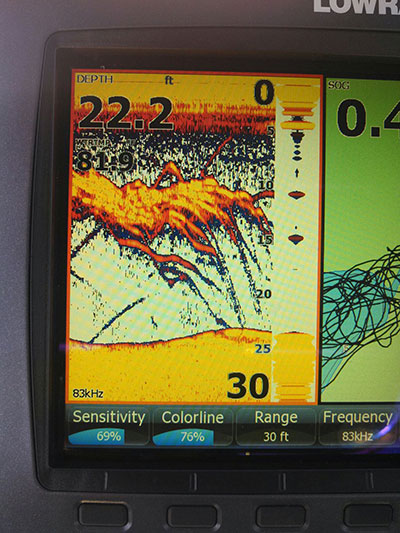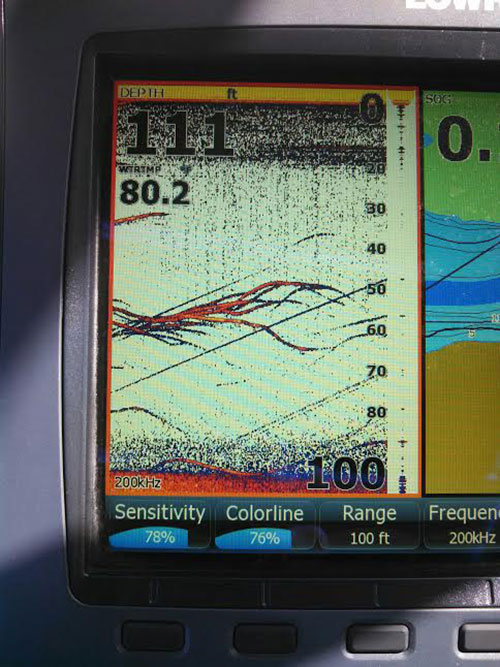
By Capt. James McManus
We’ve made it through the heat of summer, past a good portion of the crowds, jet skis and skiers. Now is the time to get serious about the fishing. It’s a shame that the time of most interest and activity for guides coincides with the least interesting and toughest fishing of the year. While summer can still hold times of decent fishing, our mountain lakes generally give up bags of fewer and smaller fish. There were many days this summer when 10” spots were about the only thing happening. Almost every trip, if you were in open water, there were fish – read walleye, at 80 to 90 feet, but regardless of what you pulled in front of them, they were only occasionally hungry.
Now as the water cools, the fish will start to bunch up, become a little more active, somehow grow in size, and stay on the gravy train a little more each day. I spend a good portion of every trip with my eyes glued to the Lowrance units on my boat. I have just traded boats and tried another brand of sonar, but just couldn’t get the results that I get from my Lowrances, so I re-upped, got new ones and am back to seeing what I like. There is nothing more satisfying to me than to see a screen light up, covered with fish that I know will bite. Once you see fish, there are several different approaches to actually get them on the hook.

If you are cruising the shoreline in Fontana and are a cast away from the bank, in say, 45 feet of water, what you’re looking for is a concentrated group of 6 to 10 fish, off the bottom, maybe around a point or indention. When I find this, it’s time to stop, pull out the jigs and sink a mini fluke down to their location. If they are a little higher in the water column, a crankbait or jerkbait may get deep enough for them. Typically, when you find them, they will stretch out for several hundred yards and you can move up and back until you run out of them.

This time of year, the walleye, whites, and sometimes smallmouth will school tightly way offshore. When you find this, you have the option of vertically presenting bait, jigs, or ice jigs and spoons. If we are on a point, maybe 80 feet deep where you can pinpoint their location, then a vertical presentation is a good option. If you are in 200 feet of water and there are several schools, it may take trolling to keep you on fish. The key is to keep an eye on your electronics and see what the fish are doing, how they are reacting to your baits, and their depth relative to where you are presenting your offerings. Properly tuned sonars have no problem seeing an eighth ounce jig drop 80 feet to a school of fish. With the sensitivity cranked up past where you normally run it [I frequently run mine at 80%], you can spot things you have never seen before and can follow your bait right to the mouths of your target. I really enjoy watching a falling bait have several fish come up in the water column to look and feel that TICK of a solid bite.
Enjoy this cooler weather, bigger fish, and more active and longer feeding periods that God has given us. Stay safe, let folks know where you’re going and when you will be back, and give me a call if you want to experience one of the areas true gems. Later, Capt. James
Capt. James McManus is the Owner of 153 Charters. Give him a call for a great day of boat fishing!